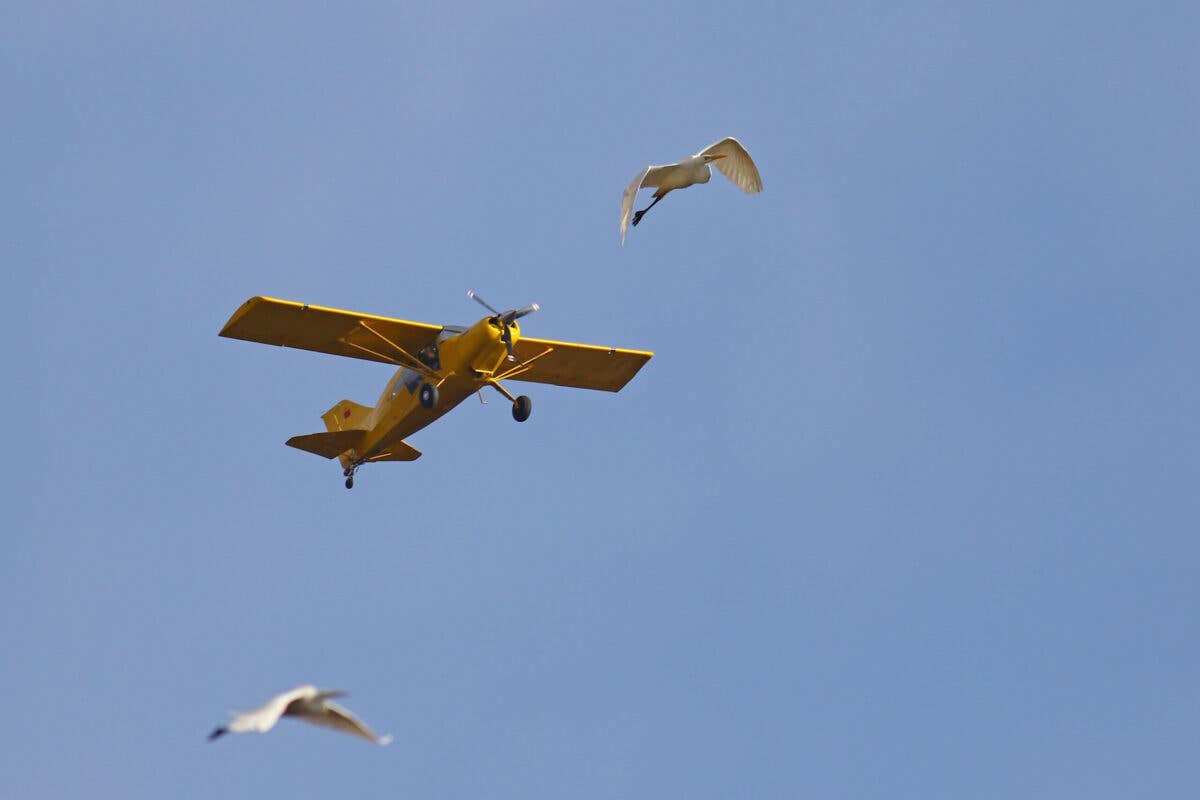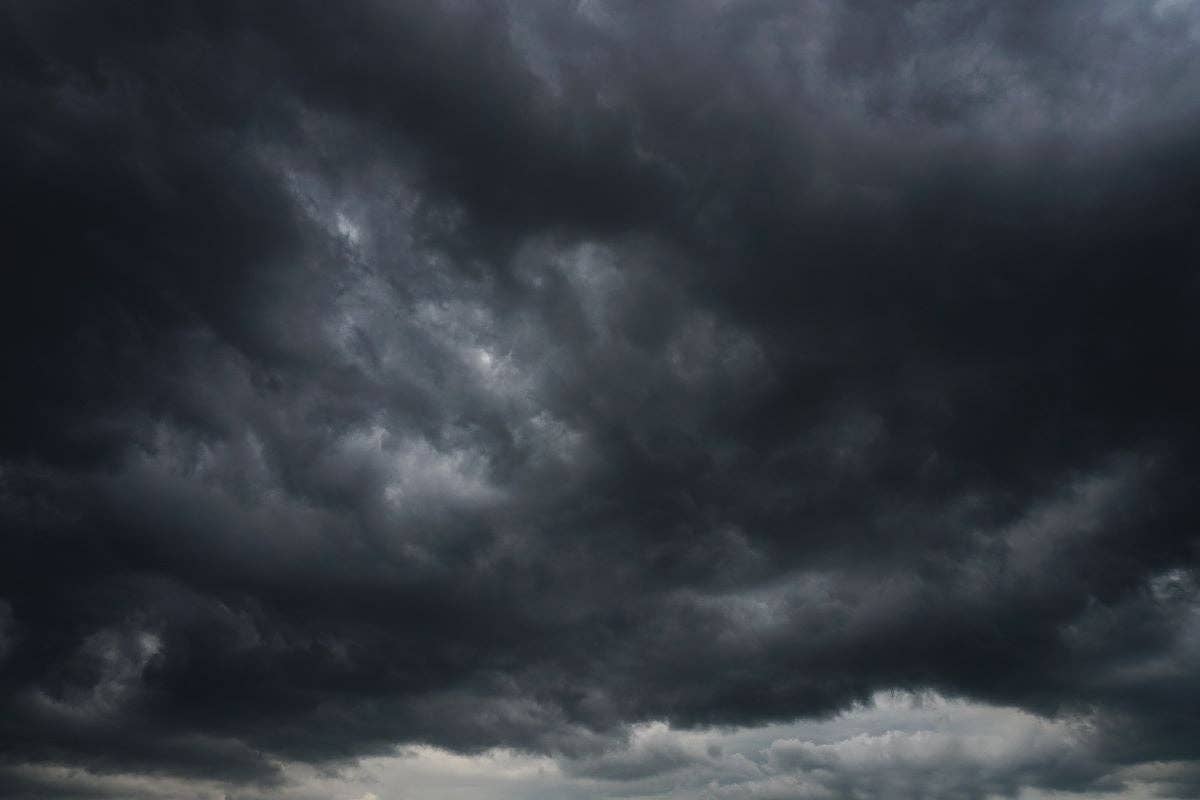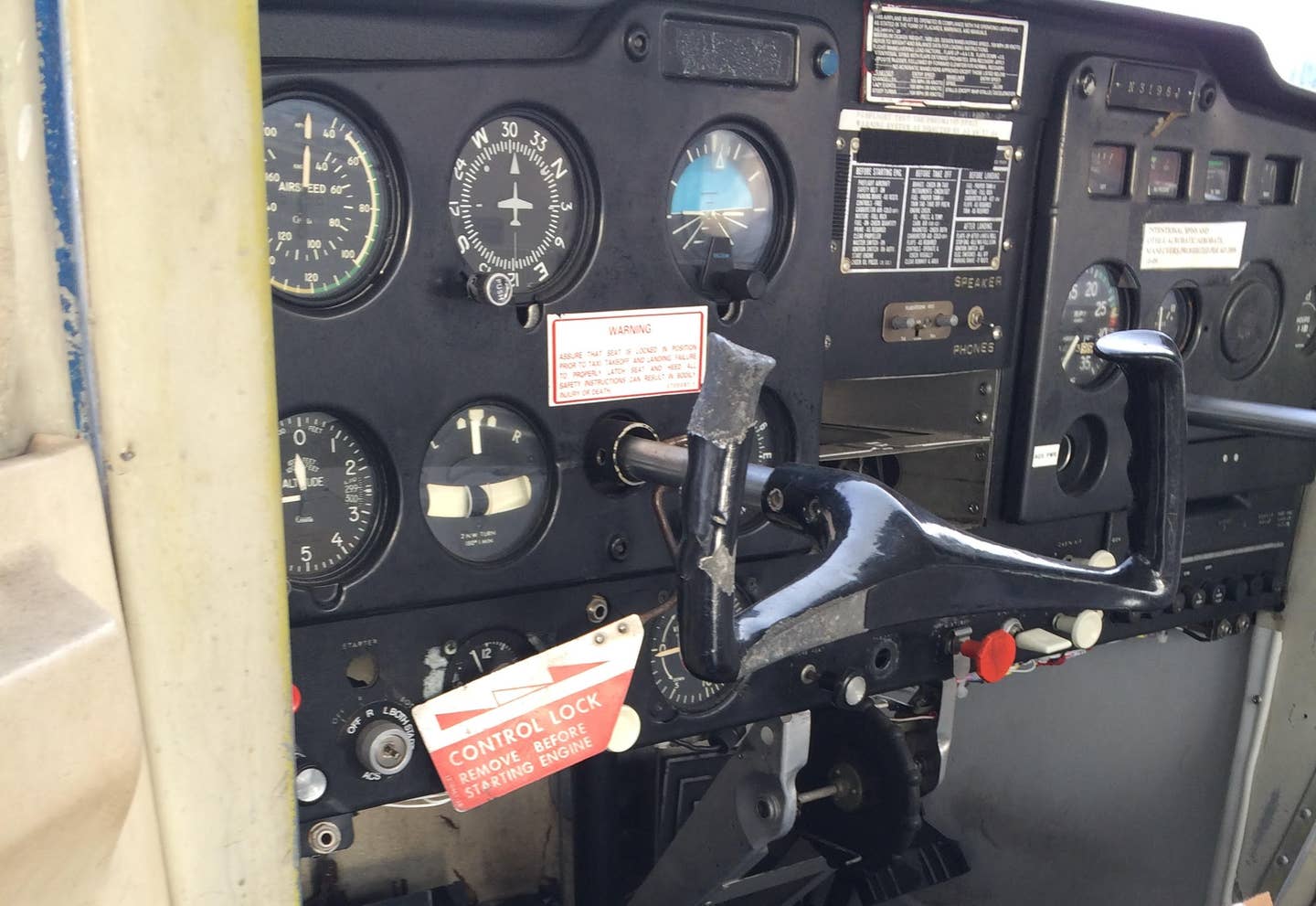Wildlife Is a Growing Threat to GA Pilots in the Summer
Reported strikes have increased greatly in recent years, so how can you prevent one?

According to the FAA, research indicates that mounting a UV LED light on landing gear on the exterior of the aircraft could potentially stop bird strikes before they occur. [Credit: Adobe Stock]
As we enter the summer months, one thing pilots increasingly have to contend with is the risk of hitting wildlife—aside from bad weather and long traffic lines.
Here's some startling insight: the FAA says the number of wildlife strikes reported per year increased steadily from about 1,800 in 1990 to 16,000 in 2018. That's a seven-fold increase, or as many as 40 strikes a day. A total of 58 percent of those strikes occurred during May and July.
These strikes have racked up a collective maintenance bill of $870 million, with piston aircraft operators primarily operating out of general aviation airports facing the highest probability of strikes and, therefore, the brunt of the fees.
Unsurprisingly, the number of reported strikes declines consistently by 34 percent once you climb above 500 feet, and 43 percent for each 1,000-foot gain in altitude for both commercial transport and GA aircraft.
You may wonder why this is happening. According to the FAA, “Expanding wildlife populations, increases in aircraft movements, a trend toward faster and quieter aircraft, and outreach to the aviation community all have contributed to the observed increase in reported wildlife strikes."
There has been greater emphasis on wildlife strike hazard research and airfield wildlife management. Much is being done to reduce the risk to pilots while protecting these species. The FAA said it has worked with the United States Department of Agriculture (USDA) for more than 20 years in collecting data to document these strikes to develop a scientific approach to handling the risk. One of those solutions is equipping pilots with tools to submit strike reports.
Increased Risk of Bird Strikes
Specific to birds, Boeing points out that aviation bird strikes are a global and industry-wide issue affecting all aviation stakeholders including:
- Pilots
- Mechanics
- Airlines
- Airport operators
- Air traffic controllers
- Wildlife personnel
- Aviation safety analysts
- Airplane and engine manufacturers
- Flight training organizations
- The traveling public
The strike reports also help dispel common myths that pilots have adopted, such as the ideas that birds don't fly at night, in poor visibility, or dive to avoid an approaching airplane.
Mitigating the Risks
Luckily, pilots can take some preemptive actions to mitigate their risks.
Pilots can use the Avian Hazard Advisory System (AHAS), developed by the U.S. Air Force, a risk assessment tool that provides the user with a standardized measure of bird-strike risk for low-level routes. It calculates risk by measuring the number of bird strikes in a particular area and the average mass of the birds from the FAA database. AHAS also incorporates weather radar data from NEXRAD, historical information (the USAF Bird Avoidance Model), and predictive models to determine current bird activity. AHAS provides strike risk assessment for
- VR Routes
- IR Routes
- Ranges
- MOAs
- Military airfields
Tips for Pilots Dealing with Wildlife
While preventing a wildlife strike will be most effective on the ground, pilots want to know what to do when caught off guard by an intruding friend either in the air or on the airport surface.
According to the FAA, here are some things worth considering:
- Be alert during departure: 93 percent of reported strikes with turbine aircraft have happened below 500 feet agl. Fly the airplane in a controlled manner, resisting the urge to pitch or bank excessively or abruptly.
- If you observe wildlife on or near the airport, report what you see to ATC as soon as possible, as this will allow them to take appropriate steps to help clear the area, keep other pilots aware, and improve overall tracking.
- Boeing also suggests delaying departure if there are reports or wildlife observations near the runway. If winds permit, pilots can change their runway choice.
- Pilots should consider adding a briefing item on both departure and approach procedures to reduce the consequences of a strike. As evident from the more prominent Flight 1549 incident (“The Miracle on the Hudson”) that lasted just over three minutes, things can happen quickly and demand top-notch execution.
- When below 10,000 feet, departure speeds of less than 250 knots will help offset—by 30 percent—the opposite kinetic energy a bird would have above 300 knots. Moreover, given the higher risk of striking wildlife below 3,500 feet, consider maximizing the climb rate until above that altitude, especially during the night and the summer months.
- In its wildlife tips for pilots, the NBAA suggests increasing aircraft visibility in the airport environment, possibly to stave off curious creatures.
- Unfortunately, eliminating all risks is impossible, and preparing for emergency procedures in response to a wildlife strike will be the ultimate hedge against total disaster. That means staying calm as possible and using all available options.
The first wildlife strike was reported in 1905, pointing to the inherent risk that aviation will continue to contend with. If flight crews and pilots do their best to stay up to date with the possibilities of a strike and follow recommended procedures, they can reduce the effects of an incident.

Subscribe to Our Newsletter
Get the latest FLYING stories delivered directly to your inbox






